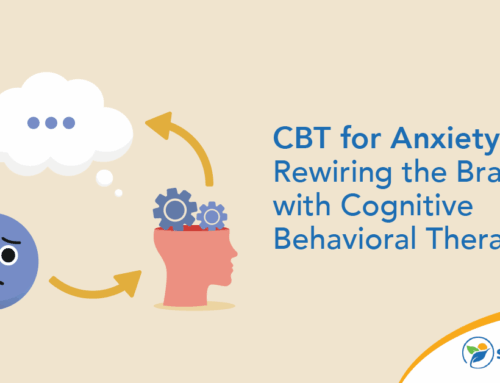When it comes to wellness, there’s always room for improvement. And when you’re overcome with motivation, it’s easy to commit to lofty aspirations. However, smaller aims might lead to greater results. To achieve attainable wellness goals, setting them up properly is key.
There’s a way to keep your health plans on track, and it starts with the right planning. Here’s how to set realistic wellness goals in a few simple steps.
Assess Your Current Health
Before setting any wellness goals, it’s important to identify your areas of improvement. Pinpointing specific habits that need changing will give your goals direction. With direction, it can be easier to craft achievable health objectives that can be broken down into manageable steps.
To start, take some time to identify what’s important to you. Connecting your goals to a bigger, long-term result can help you stay motivated to make changes that will last. Once you have an aim to strive for, you can set achievable goals to help you get there.
Simply stating that you want to exercise more is an admirable objective, but it isn’t connected to a bigger, more inspiring outcome. Instead, try connecting it to meaningful results. For example, what matters most might be having the energy and stamina to enjoy a long-awaited trip with loved ones.
Because exercise is likely to help you achieve this purpose, there’s a greater chance you’ll maintain the habit, even when the initial burst of motivation wears off. Identifying areas of improvement and linking them to your priorities can set your goal-setting strategy up for success.
Attainable Wellness Goals: Setting SMART Aims
When you know what matters to you most, you can begin setting manageable health goals to help you turn aspirations into reality. How you structure these goals matters. For best results, craft your goals according to the SMART model:
- Specific. The goal should be clear and well-defined; too vague and it can be overwhelming.
- Measurable. A measurable outcome can be tracked, making it easier to monitor your progress and creating a clear moment of achievement.
- Attainable. Overly ambitious goals are overwhelming and less likely to be achieved. A series of attainable aims can lead to more success than a single grand objective.
- Realistic. Effective goals are not too big and not too small. They should be realistically motivational, sustainable and relevant to larger health aspirations.
- Time-bound. Goals bound by specific timeframes are more easily monitored and tracked.
The above elements combine to form highly realistic wellness targets. Purposefully specific and attainable, a proper SMART goal poses a healthy challenge that’s still well within your capacity to achieve. A time line gives SMART goals a clear deadline to prevent never-ending tasks, while measurability makes it easy to track them as time goes on.
For example, “eating healthier” is a vague, unmeasurable goal with no clear line of achievement. “I will double my daily vegetable intake by the end of next month” follows the SMART model and is more likely to be achieved.
Take Actionable Steps
Once your SMART goals are clear and well-defined, it’s time to start making a plan to achieve them. Making a concrete plan can be an effective way to get closer to your goals. One study found that more than 50% of patients following a wellness plan saw consistent behavioral changes lasting weeks after their initial implementation. Research like this suggests planning may help you turn your lifestyle changes into sustainable habits.
Effective planning means breaking your goal down into a series of actionable steps. Doing so ensures you’re regularly making progress toward your goal without overwhelming yourself. Too many big changes to a routine at once can be hard to manage. Keep your new habits simple and there’s a greater chance you’ll maintain them.
Actionable steps are, above all, realistic. When creating them, consider how much time and energy you’ll be able to devote to your goal on a regular basis. Though it’s tempting to take on many responsibilities right away, smaller, achievable health objectives are more likely to keep you on a steady path toward your aims.
For example, say your SMART goal is to maintain an exercise schedule of five sessions per week within the next 3 months. If you’re starting at zero sessions per week, attempting five right away is likely unsustainable. Instead, start with a single session for the first 2 weeks. Once you’ve achieved that, you can add a second session to the schedule.
Slowly taking on more as you progress gives you time to acclimate to changes in your routine. Plus, it offers you a sense of accomplishment that can motivate you to keep striving.
Track Your Progress
When it comes to attainable wellness goals, setting them is one thing. To keep yourself on track toward your ultimate aim, it’s important to devote some energy to tracking your progress.
There’s a reason measurability is a key component of every SMART goal. It’s hard to stay focused on a long-term task when there’s no identifiable moment of achievement. SMART goals are measurable by design, which also means they can be monitored as you make progress.
Consider setting aside some dedicated goal-tracking time. This can be a few minutes each morning or a longer period of reflection at the end of the week. Taking a hard look at your progress can reveal any areas that need adjustment. It can also be a chance to congratulate yourself for consistent achievements. Creating notable milestones to celebrate as you reach them may be a valuable motivator.
A wellness goal partner can be another source of motivation. Sharing your goals with a friend gives you a source of encouragement to turn to as you progress. It may even inspire your loved one to make a health goal of their own that you can track in tandem.
It’s never too late to achieve your wellness goals. If you need extra support, seeking it out is just one step on the path to a healthy lifestyle. At Sunlight Recovery, our team can help you stay on track. Contact us today to get started.







